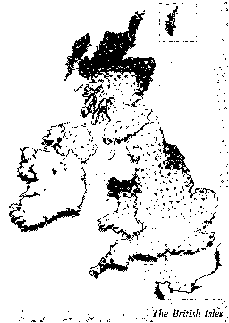
6
The very first stages of the existence of people on the British Isles are frequenly described as prehistoric
and referred to as unwritten history of Britain.
The geographical position of the land was both a blessing and a problem: on the one hand the insular
position protected the country from invasions; and on the other – the lowland facing the continent always
invited invasions.
The greatest material monument of the ancient population of the British Isles is Stonehenge on the
Salisbury plain,– a monumental stone circle and a memorial of the Stone Age culture.
The first ever inhabitants are believed to be hunters of the Old Stone Age who came from the Continent, to
be followed by new waves of imigrants.
By the end of the Stone Age the Beaker people who were called so after the clay mugs or "beakers" they
could make,– were farmers and metal was already being used.
The beginning of the Stone Age coincided with the arrival of new invaders, mainly from France. They were
the Celts. Reputed to be tall, fair and well built, they had artistic skills and were good craftsmen. Their dialects
were imposed on the native population: the Gaelic form was spread in Ireland and Scotland, and the Brythonic
in England and Wales. It was the Brythonic tribe of the Celts that gave its name to the whole country.
The culture of Celts in the Iron Age was not altogether barbaric. Their Priests, the Druids, were skillful in
teaching and administration.
But the Romans came with a heavy hand,
And bridged and roaded and ruled the land,...
wrote R. Kipling

